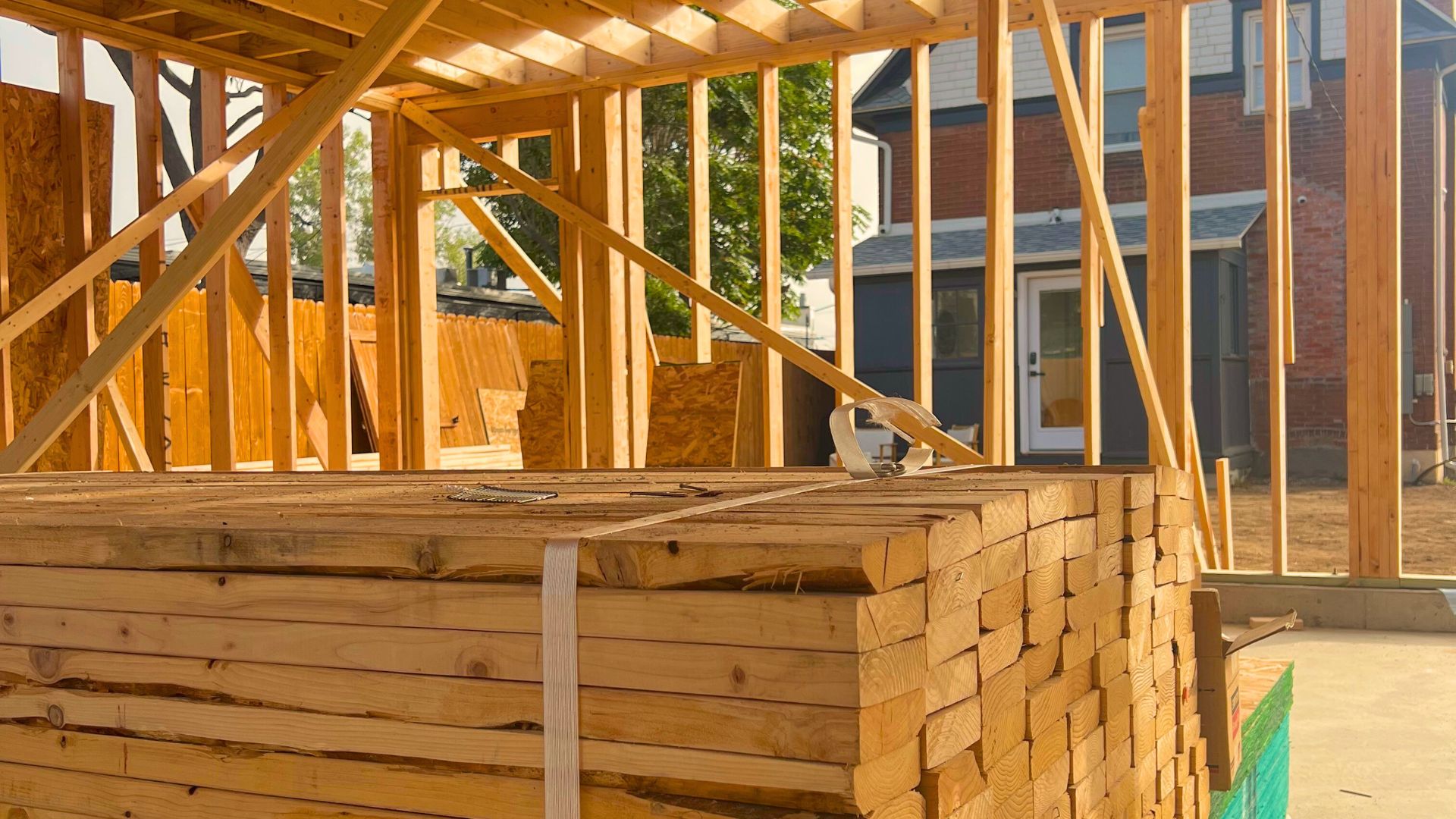
Stack of Lumber on a Sustainable Design Build custom home project in Denver.
As new tariffs on timber, lumber, and wood products take effect, construction professionals across the country are bracing for another wave of material price volatility. The policy, announced by the U.S. administration and covered by CBS News, imposes a 10% tariff on timber and a 25% tariff on cabinetry and vanities, with additional increases expected early next year.
While these may seem like routine trade adjustments, the implications for homebuilding and remodeling—especially in markets like Denver—are significant.
Rising Material Costs and Supply Pressures
Industry analysts note that lumber tariffs ripple far beyond the mill. As CBS News correspondent Kelly O’Grady explained, these levies will directly impact “the cost to build a new home,” particularly in a housing market already suffering from limited supply of starter homes.
For custom builders and remodelers, this translates into higher project costs on essentials such as framing, cabinetry, and finish carpentry. Even homeowners planning to refurnish or renovate may see price hikes in interior woodwork, kitchen installations, and built-ins.
Although trade partners such as the U.K., Japan, and the European Union may receive lower tariff rates through negotiated agreements, imported wood products from other regions—especially China—face steep markups that will strain U.S. inventories and budgets.
Broader Market Implications
The policy shift comes amid ongoing trade tensions between the U.S. and China, with uncertainty reflected in volatile market reactions. As O’Grady noted, concerns go beyond timber pricing. Investors remember the prolonged trade standoff of 2018–2020, and fear that expanded tariffs—some reaching as high as 100%—could spark renewed inflation or cause the Federal Reserve to pause rate cuts later this year.
In practical terms, any surge in inflation or borrowing costs could further complicate financing for residential construction, placing pressure on both builders and clients seeking predictable project budgets.
The Impact on American Producers
Beyond city markets, American farmers and timber producers are also feeling the squeeze. CBS correspondent Lana Zak reported from Iowa that ongoing tariff exchanges are “hitting right back, tariff for tariff,” leaving U.S. agricultural and wood-related exports in a difficult position. With soy and lumber stocks piling up and storage costs rising, domestic producers are experiencing reduced demand and thin margins.
As Zak emphasized, many farmers and manufacturers are simply “trying to get every last penny” from what would otherwise have been strong production years. The resulting oversupply further complicates pricing for the domestic construction supply chain.
What It Means for Denver Builders and Homeowners
For Denver homeowners and design-build firms like Sustainable Design Build, these shifts underscore the importance of proactive project planning. Tariff-driven material fluctuations can influence everything from framing schedules to custom millwork selections, making early budgeting and transparent communication with clients essential.
Builders who prioritize local sourcing, maintain flexible design allowances, and emphasize cost-control strategies will be best equipped to navigate these changes while maintaining project quality and timelines.
To learn more about how Sustainable Design Build manages cost efficiency and craftsmanship in every project, visit SDB’s home renovation page.
Connect With Us
Planning your next renovation, or maybe you are looking to do a complete remodel for your home? Whatever the task, it can’t hurt to ask. Reach out to our team through this form.
We can schedule a free consultation and discuss everything you need to get your project moving in the right direction. Did we mention, it’s absolutely free?
